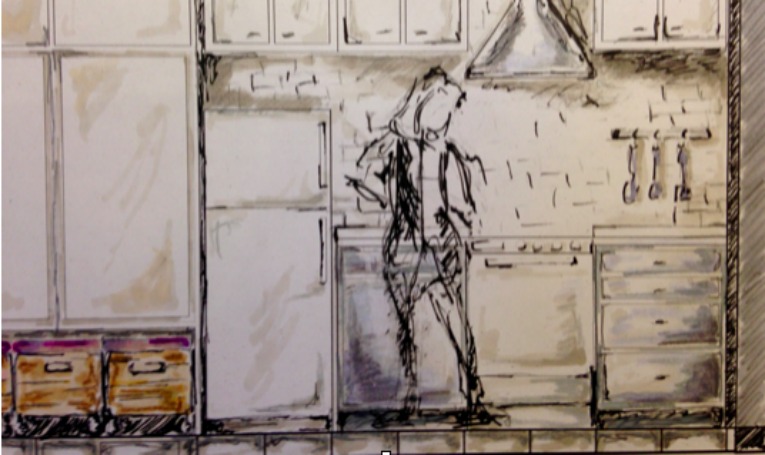by Susan Besser, Interior Design Faculty, O’More College of Design
All of contemporary design begins with the people whom we are designing for. This is what we call “human-centered design” and “user-centered design.” When something functions well, a can-opener, say, it means that the design helps the user accomplish the task better.
So how do you build a home for a user who has no home? How do you build for the homeless?
Studio One students of O’More College of Design were challenged to develop housing for the homeless. Their problem: develop that housing inside a 320 square foot shipping container, something that looks nothing like a home.
The first step in User Center Design is empathy, trying to feel what the person who will use your design feels. But being homeless does not mean that every homeless user is the same. O’More Interior Design Department Chair Kelly Gore shared her experience working at the Room in the Inn. She showed a video of a homeless man from Sarasota, Florida, Donald Gould, expertly fingering piano tunes. Kelly wanted the students to appreciate that homeless people come from all backgrounds and may be talented, smart, and well-educated. To understand the people for whom they were building, the students needed to understand them individually. And so they served lunch at a downtown church.
Then each student chose a client whose story, skills and past history would guide their design. One client worked a low-wage job and could not afford to rent a Nashville-area apartment. Another required two separate sleeping spaces in the very small footprint of the structure for herself and a companion.
Once the students understood their specific users, they tried to understand how the space would function for them, “the program.” Then they produced floor plans that would meet the specific programmatic needs of the people they were serving.
Now came the execution. Students had been given a very limited budget, which meant being inventive in the use of materials. Much of what they envisioned involved “up-cycling,” the reusing discarded materials for something that has value. One student chose to use discarded wooden pallets for her flooring.
Regardless of the material and the constraints, the students fashioned spaces that were pleasing and functional and, most important, that would feel like home to the specific person for whom they designed.
Studio One is the first opportunity students have to create living environments and to recognize the wide range of interior design needs and possibilities. It also teaches how design can benefit all and helps students see the world from a different perspective. “It’s a beautiful moment,” notes Kelly Gore, “when design students realize their creativity and skills will not only provide them with successful career opportunities, but also with opportunities to impact the greater social environment.”
On a certain night in September, on a Monday night football game, Donald Gould, the homeless piano virtuoso, played the national anthem. He had found his home in that moment, in that stadium, in the “home of the brave, and the land of the free.” While he played, the O’More students designed their own homes, inspired by people like him, for a wide variety of users who have no home and they learned about design, users, and how important their work can be.



















